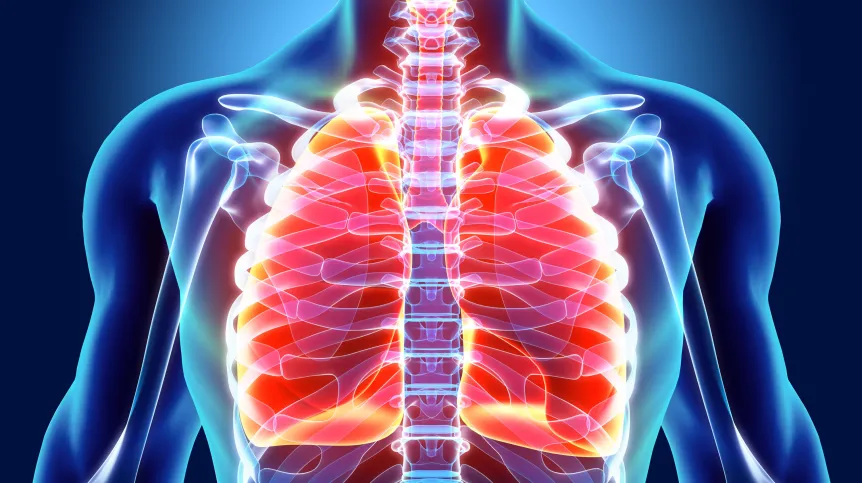
A team of doctors from Białystok and Szczecin has developed a new lung cryobiopsy method, which is helpful in diagnosing lung diseases. According to specialists, this method is less invasive, simpler and safer for patients.
The new method was developed by a team of doctors: head of the 2nd Department of Lung Diseases, Lung Cancer and Internal Diseases at the University Hospital in Białystok, Professor Robert Mróz and Dr. Jarosław Pieróg from the Department of Thoracic Surgery and Transplantation at the Independent Public Provincial Hospital in Szczecin.
According to Professor Mróz, in the diagnosis of lung diseases - suspected cancer located peripherally in the lungs, or interstitial diseases - it is necessary to obtain material for testing. The new method is based on a method recently published by Japanese specialists.
Mróz explains that until now, the collection of lung parenchyma was performed under general anaesthesia on the patient with the involvement of the anaesthesiology team. After intubation - as the doctor describes - an instrument was inserted into the trachea - a rigid bronchoscope with the shape of a metal tube. He adds that this method involves the burden on the patient, but also the risk of damage to the trachea. Then, in order to collect the material by freezing it a soft bronchoscope and a cryo probe were inserted into a rigid bronchoscope intended to protect the airway against possible bleeding.
Mróz says that the new method involves s' significant simplification’ that completely abandons the use of a rigid bronchoscope, and therefore the patient does not need to be under general anesthesia, and the procedure can be performed under minimal sedation.
According to Mróz, the new method uses a special thin bronchoscope, and instead of a rigid bronchoscope, a catheter is used to protect against bleeding. He adds that such a set is introduced into the respiratory system, and the remainder of the procedure is similar: a cryoprobe is inserted through the thin bronchoscope, a fragment of the lung parenchyma is frozen, and then collected. The catheter better protects part of the lung against possible bleeding by preventing blood from reaching the remaining part of the lung.
Listing the advantages of the new method, Mróz says that it is safer and simpler than the previously used method. 'Lower invasiveness, greater patient safety, convenience for us - the fact that the patient does not have to be under general anaesthesia, we do not use a ventilator, we do not involve an anaesthesiology team, makes the method much more accessible to patients and teams performing it,’ he says.
So far, the test using the new method has been performed on three patients at the University Clinical Hospital in Białystok. 'We did not detect any complications, there was no significant bleeding, haemorrhage or pneumothorax. All patients were discharged immediately after the procedure and a short observation period. In all three cases we obtained tissue material, which is being processed, we are waiting for the test results, while the quality of the material is comparable to the material that would be obtained by surgical incision of the chest,’ Mróz says. (PAP)
PAP - Science in Poland, Sylwia Wieczeryńska
swi/ godl/ kap/
tr. RL













